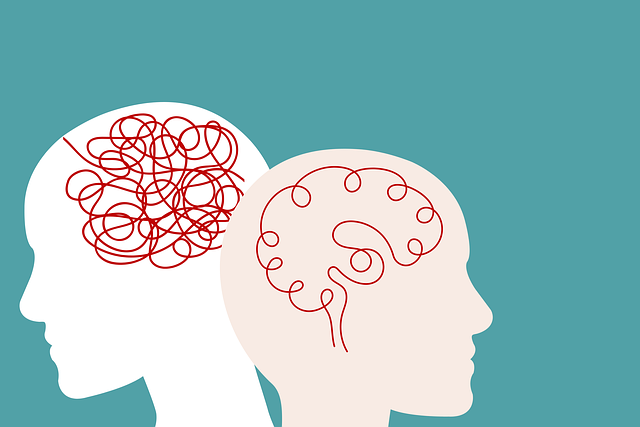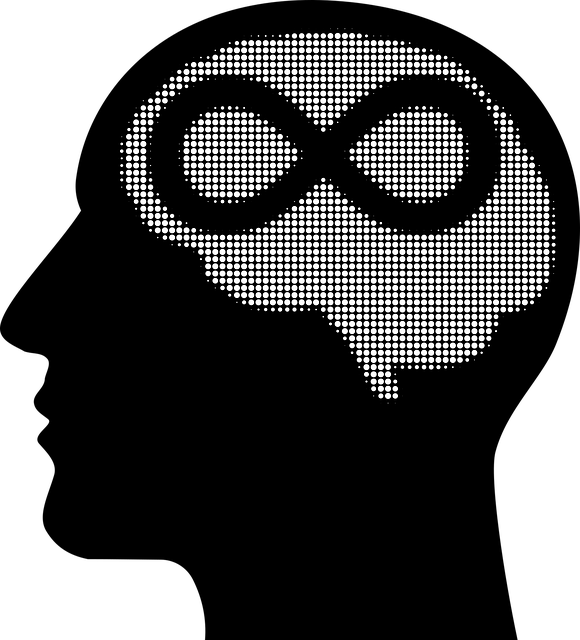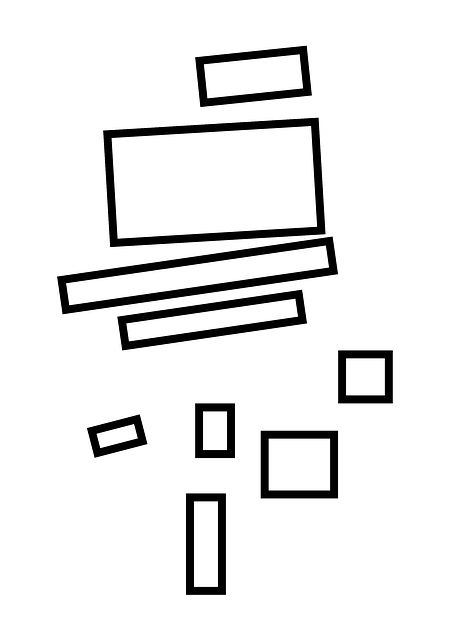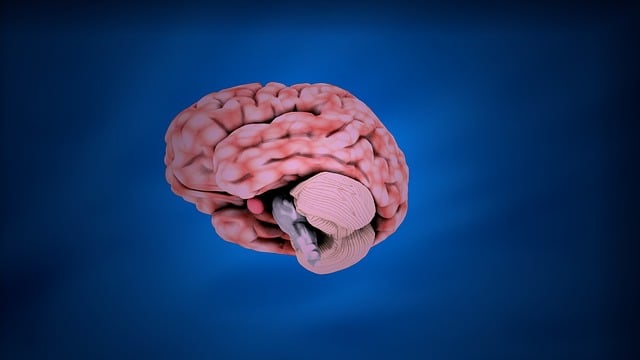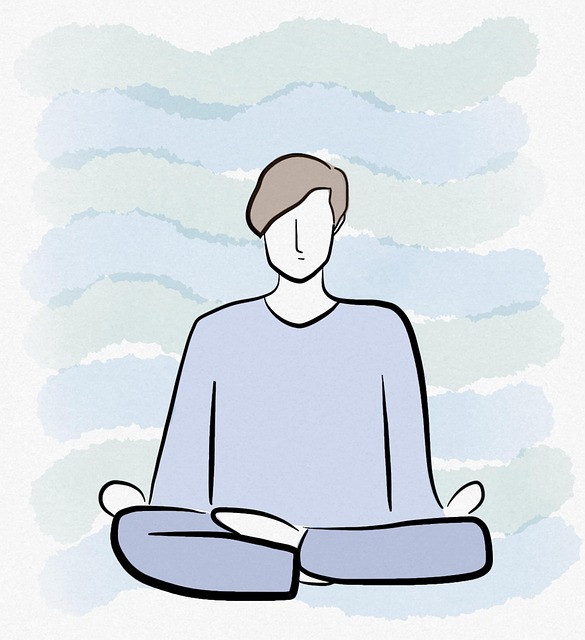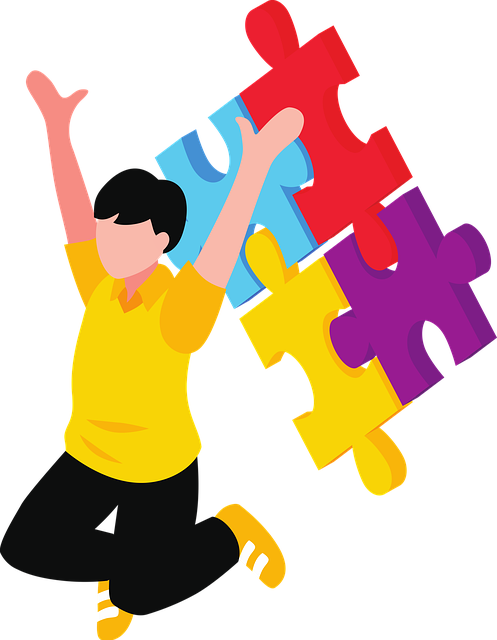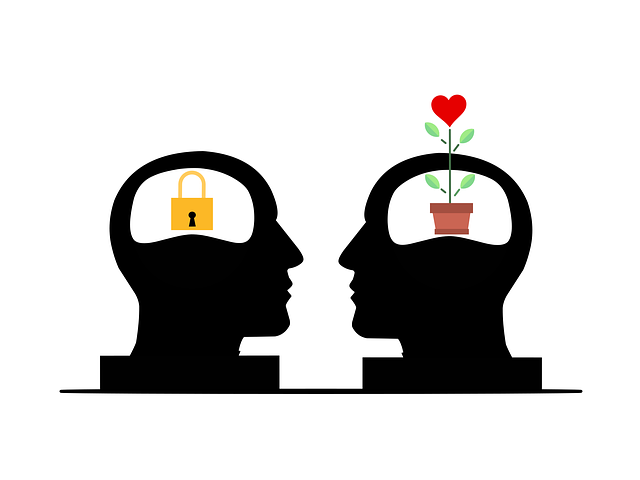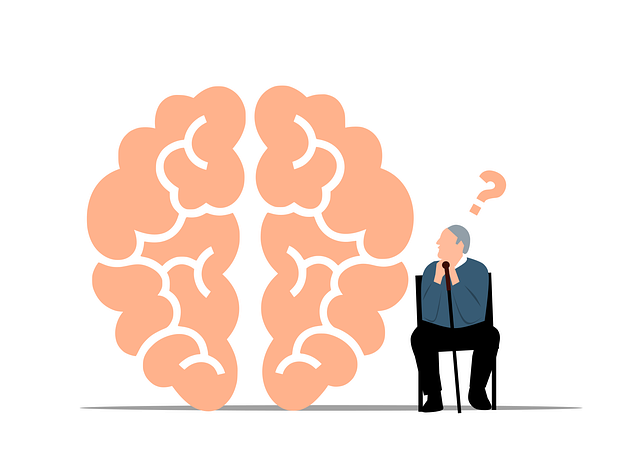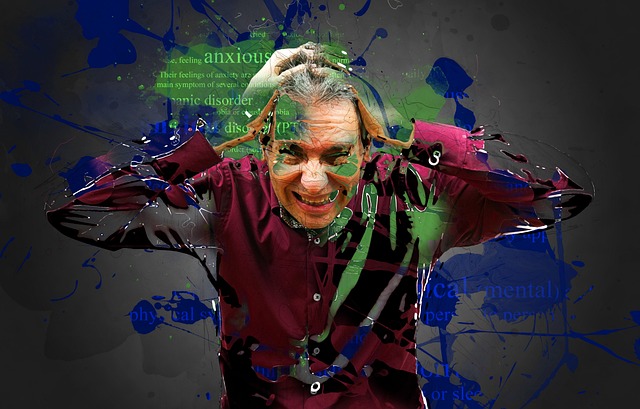Golden Adjustment Disorder Therapy (GADT) is a comprehensive therapeutic method designed to aid individuals facing significant life transitions and trauma by fostering mental wellness and self-awareness. This approach combines practical tools, positive thinking, and a growth mindset to develop robust coping strategies, enhancing resilience and equilibrium during adjustment stages. The Resilient Factors Matrix (RFM), often paired with GADT, helps identify personal strengths, leading to a positive mindset shift in managing stress, trauma, and mental health concerns. RFM exercises, incorporating mindfulness, cognitive reframing, and creative outlets, strengthen the mind-body-spirit connection, aiming to equip individuals with practical skills for adversity recovery. Proven effective in therapy and corporate training, GADT integrating RFM principles shows improved emotional regulation and resilience. Continuous improvement through data tracking, public awareness campaigns, and Emotional Intelligence guidance further enhances RFM programs' impact on mental health support.
“Unraveling the power of resilience through Golden Adjustment Disorder Therapy (GADT), this article explores a transformative approach to fostering mental fortitude. We delve into the core concepts of RFM (Resilience, Flexibility, and Mastery) as a catalyst for building unshakeable resilience. From understanding GADT’s foundational principles to implementing practical exercises, we guide readers through effective strategies.
Case studies demonstrate successful RFM integration in diverse settings, highlighting its versatility. Additionally, we provide insights on measuring program effectiveness and fostering continuous improvement, ensuring lasting positive outcomes.”
- Understanding Golden Adjustment Disorder Therapy: A Comprehensive Overview
- The Role of RFM in Resilience Building: Unlocking the Potential
- Designing Effective Resilience Exercises: Practical Strategies
- Implementing RFM Techniques in Various Settings: Case Studies
- Measuring Success and Continuous Improvement in RFM Programs
Understanding Golden Adjustment Disorder Therapy: A Comprehensive Overview

Golden Adjustment Disorder Therapy (GADT) is a therapeutic approach designed to help individuals cope with and overcome the challenges posed by major life transitions and traumatic events. This type of therapy recognizes that people often struggle to adjust to significant changes, leading to feelings of anxiety, depression, or post-traumatic stress. GADT offers a comprehensive framework to understand these adjustments and provides practical tools for resilience building.
The core principle of GADT revolves around the idea that fostering mental wellness and self-awareness exercises can significantly enhance one’s ability to adapt. By encouraging positive thinking and promoting a growth mindset, individuals can develop effective coping strategies. These exercises are tailored to help clients navigate through various stages of adjustment, ensuring they emerge with increased resilience and a deeper sense of equilibrium in their lives.
The Role of RFM in Resilience Building: Unlocking the Potential

Resilience is a key component to overcoming life’s challenges and adversities, making Resilient Factors Matrix (RFM) an invaluable tool in building mental fortitude. RFM, often used alongside Golden Adjustment Disorder Therapy, helps individuals identify their strengths and resources, facilitating a positive mindset shift. By understanding one’s resilience factors—such as social connections, personal skills, and coping strategies—people can cultivate a sense of empowerment and adapt better to stressful situations.
This approach not only aids in managing existing mental health concerns but also promotes Self-Care Practices and Trauma Support Services. Mental Health Education Programs Design that incorporate RFM can equip individuals with the knowledge and skills to navigate life’s twists and turns, fostering a more balanced and fulfilling life. Through targeted interventions, resilience can be built and nurtured, ensuring individuals are better prepared to face future challenges head-on.
Designing Effective Resilience Exercises: Practical Strategies

Designing effective resilience exercises is a key component in implementing RFM and building mental fortitude. These activities should be tailored to address specific challenges, such as stress management, anxiety relief, and burnout prevention, which are often intertwined with Golden Adjustment Disorder Therapy. Incorporate a variety of strategies like mindfulness practices, cognitive reframing techniques, and physical movement exercises to stimulate the mind, body, and spirit connection. For instance, guided meditations can help individuals cultivate present-moment awareness, while progressive muscle relaxation strengthens mental control over bodily responses.
Additionally, consider integrating creative outlets like journaling or art therapy to encourage emotional expression and processing. Group activities that foster collaboration and community support are also powerful tools. Facilitating discussions on resilience topics and organizing team-building exercises can enhance social connectedness, a vital aspect of mental wellness coaching programs development. Remember, the goal is to equip individuals with practical skills and mindsets that promote adaptability, recovery from adversity, and overall well-being.
Implementing RFM Techniques in Various Settings: Case Studies

Implementing RFM (Resilience, Flexibility, and Mastery) techniques across diverse settings has proven to be a game-changer in various fields, including therapy and personal development. Case studies show that Golden Adjustment Disorder Therapy (GADT), for instance, has successfully incorporated RFM principles to enhance emotional regulation and foster resilience among its clients. By focusing on these key aspects, GADT helps individuals develop coping strategies that improve their overall well-being and mental fortitude.
One notable application is in corporate training programs where RFM exercises are used to boost employee confidence and resilience. These techniques enable professionals to navigate challenging situations more effectively, promoting a healthier work environment. The success of such initiatives highlights the versatility of RFM, demonstrating its ability to transform various settings into spaces that encourage emotional growth and enhanced problem-solving skills.
Measuring Success and Continuous Improvement in RFM Programs

Measuring Success and Continuous Improvement in RFM Programs are paramount to ensure effectiveness and adaption to evolving needs. Key performance indicators (KPIs) should be established to track progress, such as participant engagement levels, completion rates, and reported improvements in emotional resilience. Regular feedback mechanisms, including post-program surveys, allow for valuable insights into the perceived benefits and areas of improvement. By collecting qualitative and quantitative data, program organizers can identify what works best and make necessary adjustments.
The integration of Public Awareness Campaigns Development strategies can enhance RFM programs by fostering a broader understanding of resilience and its significance in managing stress and trauma. Emotional Intelligence and Crisis Intervention Guidance techniques, often incorporated into these campaigns, provide participants with practical tools to navigate challenges. This holistic approach ensures that not only are individuals equipped with resilience-building skills, but also that public discourse around mental health is advanced, leading to better support systems for those affected by Golden Adjustment Disorder Therapy or other similar conditions.
Golden Adjustment Disorder Therapy (GADT) offers a promising approach to resilience building, and the RFM (Resilience, Flexibility, and Mastery) model is a powerful tool in this process. By implementing practical resilience exercises designed for various settings, we can unlock individuals’ potential to cope with challenges. Case studies demonstrate the effectiveness of RFM techniques across different environments, showcasing their ability to enhance resilience. Continuous improvement in RFM programs is essential, and measuring success through tailored metrics ensures these interventions remain impactful. Embracing RFM as a holistic strategy empowers individuals to navigate life’s storms with greater adaptability and strength.

